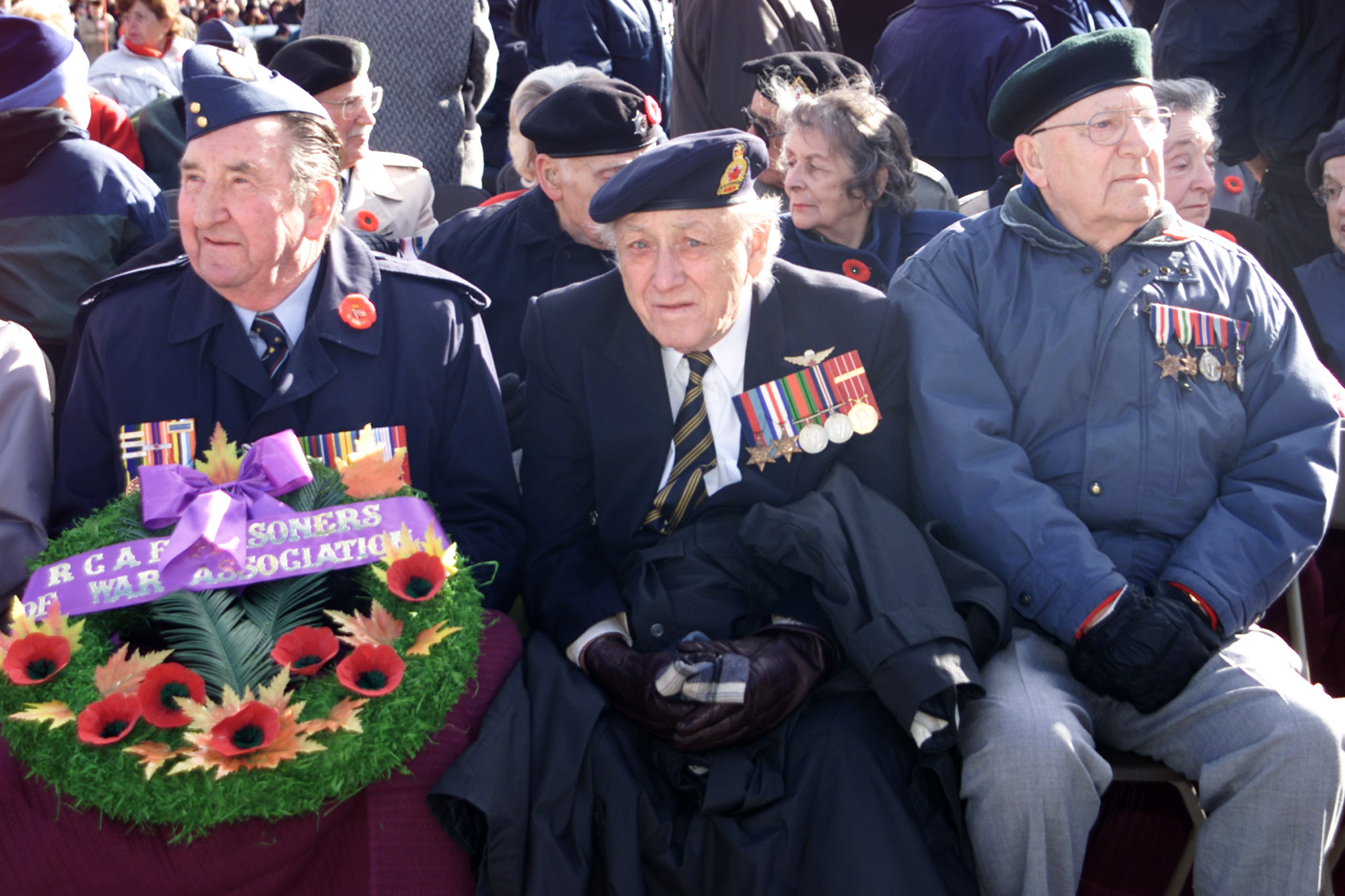Year of the Korean veteran: honouring Squadron Leader Andy MacKenzie
News Article / April 5, 2013
This year has been designated “Year of the Korean War Veteran” by the Government of Canada in honour of the 26,000 Canadian men and women in uniform who came to the aid of South Koreans during the conflict.
The commemoration coincides with the 60th anniversary of the Korean War armistice and the 50th anniversary of diplomatic relations between Canada and South Korea.
Over the three-year combat period and the subsequent peacekeeping era, Canada provided 27,000 military personnel: 23,000 Canadian Army, 3,000 Royal Canadian Navy, and 800 Royal Canadian Air Force.
Altogether, 516 Canadians gave their lives in service to defend the values of peace and freedom on the Korean peninsula.
Today, we pay tribute to a member of the RCAF who served as a fighter pilot in the skies over Korea and served in solitary confinement as a Chinese prisoner of war for almost two years, Squadron Leader Andy MacKenzie, DFC.
It was five days before Christmas in 1954 when Time Magazine wrote about a little-known Canadian fighter pilot who’d just been freed from a Chinese prisoner of war camp after almost two years.
With the headline of “CANADA: Freed Prisoner”, the story’s opening paragraph paints an evocative picture of the late Squadron Leader Andy MacKenzie’s homecoming.
“Canada's only air force prisoner of the Korean war flew home to freedom last week. As the airliner from Tokyo touched down at the Vancouver airport, a handsome honey blonde [his wife, Joyce] broke from the crowd and ran to her husband, Squadron Leader Andrew MacKenzie, freed after two years as a war prisoner in Communist China.”
The magazine went on to say that “the 34-year-old Montreal fighter pilot was serving as an exchange officer with the [United States] Air Forces in Korea when he was shot down in 1952.”
S/L MacKenzie was no stranger to aerial combat, having previously recorded nine kills as a decorated Second World War Spitfire pilot. In what might be described as a definitive account of S/L MacKenzie’s story, the June 2011 edition of Airforce Magazine, an article written by Norm Avery, reveals S/L was shot down by “a squadron mate” during a dogfight with Russian MiG-15 aircraft forcing S/L MacKenzie to eject at 40,000 feet and parachute into enemy territory. He landed in a farm field next to a woman picking sticks. According to the article, the woman barely paid attention to the pilot standing before her and returned to her chores. A few hours later, he was picked up by North Korean military authorities and taken to a prisoner of war camp, blindfolded.
After a few months of abuse and interrogation in the North Korean POW camp, S/L MacKenzie was transported to China and placed in a POW camp there, for reasons he would never know.
Once in the hands of Chinese prison guards, S/L MacKenzie was routinely tortured and grilled about what he was doing flying into China. S/L MacKenzie refused to utter anything more than his name, rank, position and serial number. It soon became obvious to S/L MacKenzie that he needed to start talking in order to spare his life. He routinely told the story of the night he was shot down and forced to parachute into North Korea. The Chinese refused to accept his story, accusing him of lying, and repeatedly tortured him until he promised to tell the “truth.” All he said was that he came to China in a truck and he had no idea why.
With the torture continuing and his mental and physical health declining, he decided to give the Chinese what they really wanted – a full “confession”, whether it was true or not. He had learned enough about the culture of Communist China from his guards and the propaganda he was forced to read, that such a confession would “bring honour” to the country and its people. Honour, the guards told him routinely, was a most valuable commodity and worth securing at any price.
So S/L MacKenzie fabricated a story about how, after he ejected, he could see the Yalu River [in China] and deliberately guided his parachute to land near there. Much to his surprise, he was summoned to a meeting almost immediately and then released. “At the sound of the word ‘release’”, according to Mr. Avery’s article , “tears flooded Andy’s eyes and he could barely choke out, ‘Thank You’.
Two years to the day that he had been taken prisoner, S/L MacKenzie was freed. He returned home and reunited with his wife and their four children.
S/L MacKenzie passed away at 89 on Sept. 21, 2009. His obituary said this about his career in the RCAF.
“Andy had a distinguished career in the RCAF for 27 years first serving as a Spitfire fighter pilot during the Second World War on 421 and 403 Squadrons and post-war flying Sabres as commander of 441 Squadron. He volunteered to do a tour of duty with the 51st Interceptor Wing of USAF in the Korean War, was shot down by friendly fire and became a prisoner of war in China for two years. He served 13 more years in the service, a portion of which was as intelligence staff officer in NORAD and ending his career as the Chief Administrator Officer at Rockcliffe, [Ont.]. After retirement, he was hired as an ad hoc commissioner of the Canadian Pension Commission for some years. He is a past president of the Royal Canadian Legion Branch 604, the founding president of the Korean Veterans Association Capital Unit 7 and the first official president of C.F.P.A. (Canadian Fighter Pilots Association). [He was also] a director of SPAADS (Sabre Pilots Association Air Division), a member of 410 RCAFA W. Barker, V.C. Wing and the POW (Prisoners of War) Association.”
The Korean War began on June 25, 1950 and active fighting ended on July 27, 1953, with the signing of the Korean armistice agreement.
